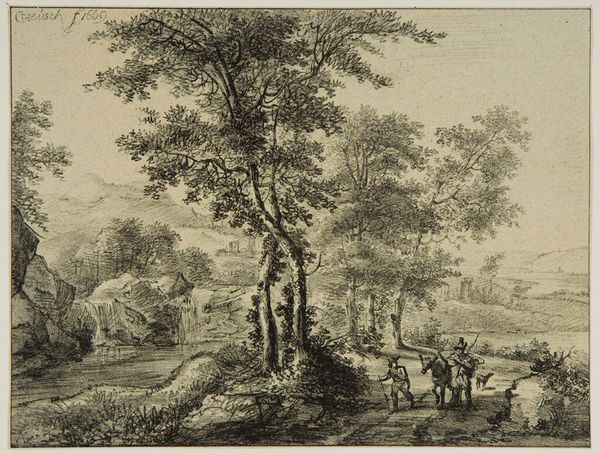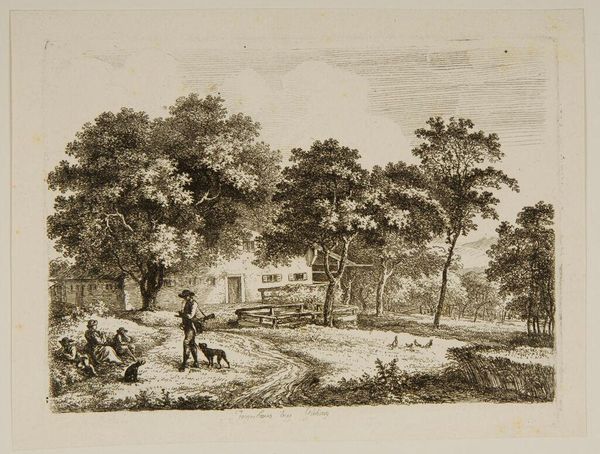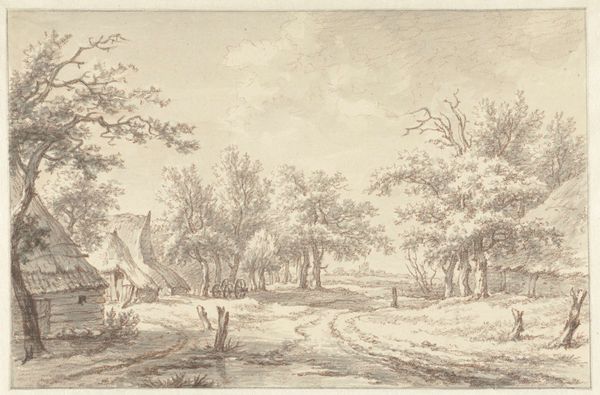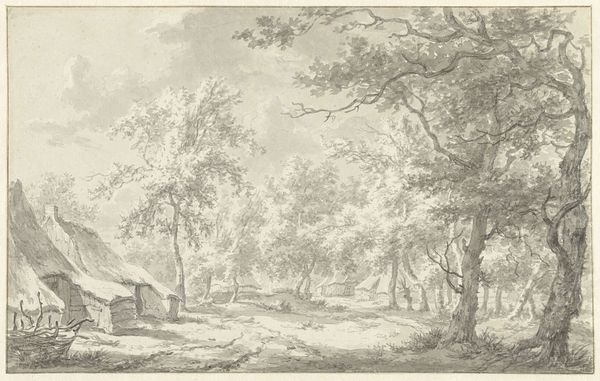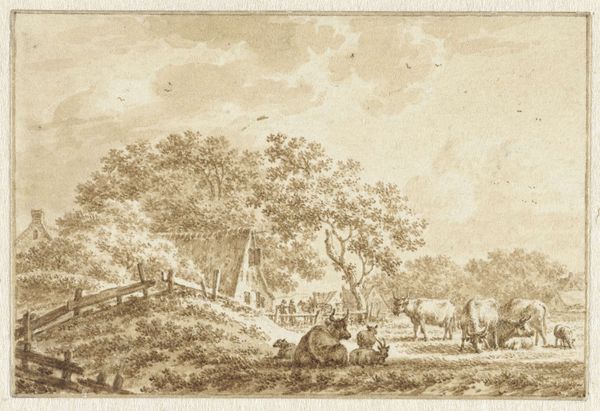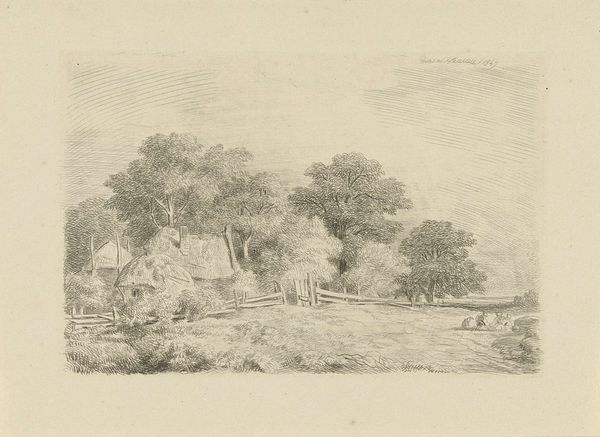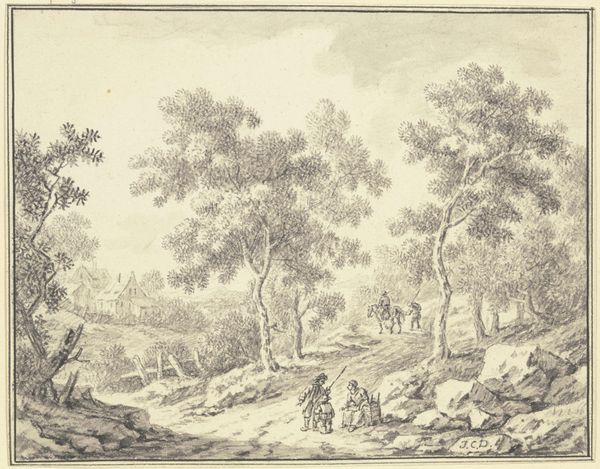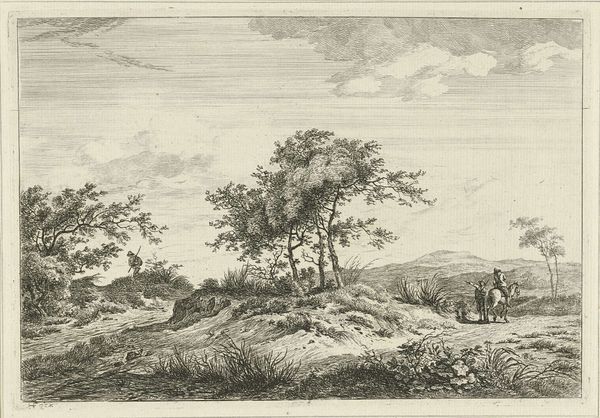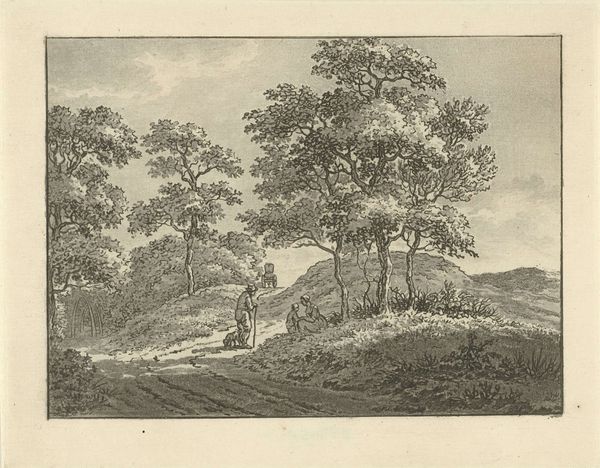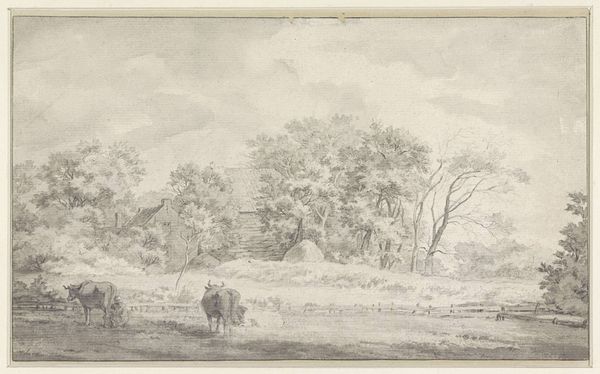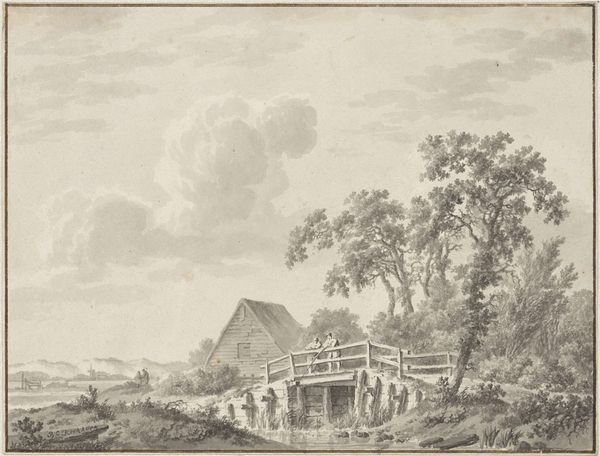
Landschap met rechts een dorpsstraat en verschillende personen 1813 - 1862
0:00
0:00
drawing, ink
#
drawing
#
pen sketch
#
pencil sketch
#
landscape
#
ink
#
romanticism
#
genre-painting
Dimensions: height 185 mm, width 275 mm
Copyright: Rijks Museum: Open Domain
Curator: This delicate drawing, rendered in ink and pencil, is titled "Landscape with a Village Street to the Right and Several People." It was created by Barend Cornelis Koekkoek sometime between 1813 and 1862 and currently resides in the Rijksmuseum. Editor: Wow, it feels like looking into a dream! The soft greys, the blurry background... like a half-forgotten memory of a simpler time. Curator: That "simpler time" is key. Koekkoek positions the rural landscape as inherently moral. It becomes an ideal that critiques rapid urbanization and the political upheaval happening during the first half of the 19th century. Editor: So, a subtle political statement disguised as a pretty picture? Sneaky. But I get it. Look at the people there, just going about their business, in harmony with nature...a sharp contrast to smoky factories and crowded city streets. The very subtle inclusion of genre painting enforces the romanticism. Curator: Precisely! It's no accident he's positioned figures—small enough not to dominate the scene—within the landscape, enacting a picturesque ideal of everyday life. Think of it as a yearning for a pre-industrial, arguably idealized, past. Editor: The muted tones contribute too. Like old photographs, they lend the piece a timeless, nostalgic quality. It’s so quiet, isn’t it? You can almost hear the birds and the rustling leaves, not the din of… whatever technological terror was dawning at the time. Curator: Absolutely. Koekkoek taps into that widespread romantic sentiment, one that mourns a lost connection with the land. It's tied to specific social anxieties tied to a transforming European landscape. His work almost anticipates the debates on the virtues of agrarianism in contrast to a rapidly modernizing society, wouldn't you say? Editor: Totally! It’s the artistic version of a collective sigh, isn’t it? It reminds us that anxieties surrounding progress aren’t new. Curator: Indeed, Koekkoek provides us a fascinating window into these 19th-century cultural currents. Editor: It also reminds us of the enduring human need for beauty and escape. It’s nice to be reminded of the countryside charm even now.
Comments
No comments
Be the first to comment and join the conversation on the ultimate creative platform.
